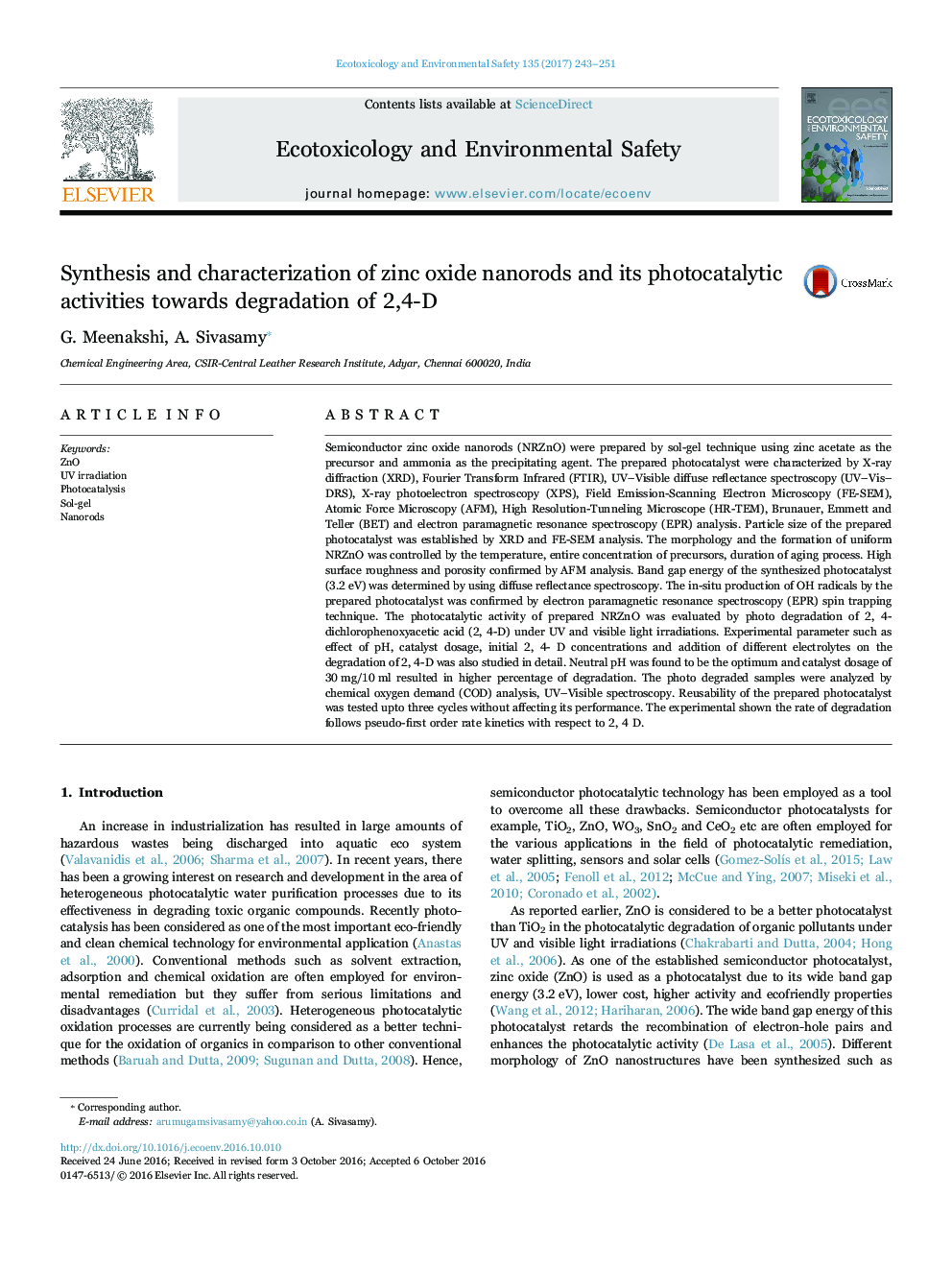| کد مقاله | کد نشریه | سال انتشار | مقاله انگلیسی | نسخه تمام متن |
|---|---|---|---|---|
| 4418993 | 1618929 | 2017 | 9 صفحه PDF | دانلود رایگان |
• ZnO nanorods were synthesized by sol-gel method and characterized.
• This nanorod is cost effective and highly active in degradation of 2,4-D.
• Instantaneous in-situ generation of OH radicals was confirmed.
• The photocatalyst retained its activity even after third cycle of the usage.
Semiconductor zinc oxide nanorods (NRZnO) were prepared by sol-gel technique using zinc acetate as the precursor and ammonia as the precipitating agent. The prepared photocatalyst were characterized by X-ray diffraction (XRD), Fourier Transform Infrared (FTIR), UV–Visible diffuse reflectance spectroscopy (UV–Vis–DRS), X-ray photoelectron spectroscopy (XPS), Field Emission-Scanning Electron Microscopy (FE-SEM), Atomic Force Microscopy (AFM), High Resolution-Tunneling Microscope (HR-TEM), Brunauer, Emmett and Teller (BET) and electron paramagnetic resonance spectroscopy (EPR) analysis. Particle size of the prepared photocatalyst was established by XRD and FE-SEM analysis. The morphology and the formation of uniform NRZnO was controlled by the temperature, entire concentration of precursors, duration of aging process. High surface roughness and porosity confirmed by AFM analysis. Band gap energy of the synthesized photocatalyst (3.2 eV) was determined by using diffuse reflectance spectroscopy. The in-situ production of OH radicals by the prepared photocatalyst was confirmed by electron paramagnetic resonance spectroscopy (EPR) spin trapping technique. The photocatalytic activity of prepared NRZnO was evaluated by photo degradation of 2, 4-dichlorophenoxyacetic acid (2, 4-D) under UV and visible light irradiations. Experimental parameter such as effect of pH, catalyst dosage, initial 2, 4- D concentrations and addition of different electrolytes on the degradation of 2, 4-D was also studied in detail. Neutral pH was found to be the optimum and catalyst dosage of 30 mg/10 ml resulted in higher percentage of degradation. The photo degraded samples were analyzed by chemical oxygen demand (COD) analysis, UV–Visible spectroscopy. Reusability of the prepared photocatalyst was tested upto three cycles without affecting its performance. The experimental shown the rate of degradation follows pseudo-first order rate kinetics with respect to 2, 4 D.
Figure optionsDownload as PowerPoint slide
Journal: Ecotoxicology and Environmental Safety - Volume 135, January 2017, Pages 243–251
